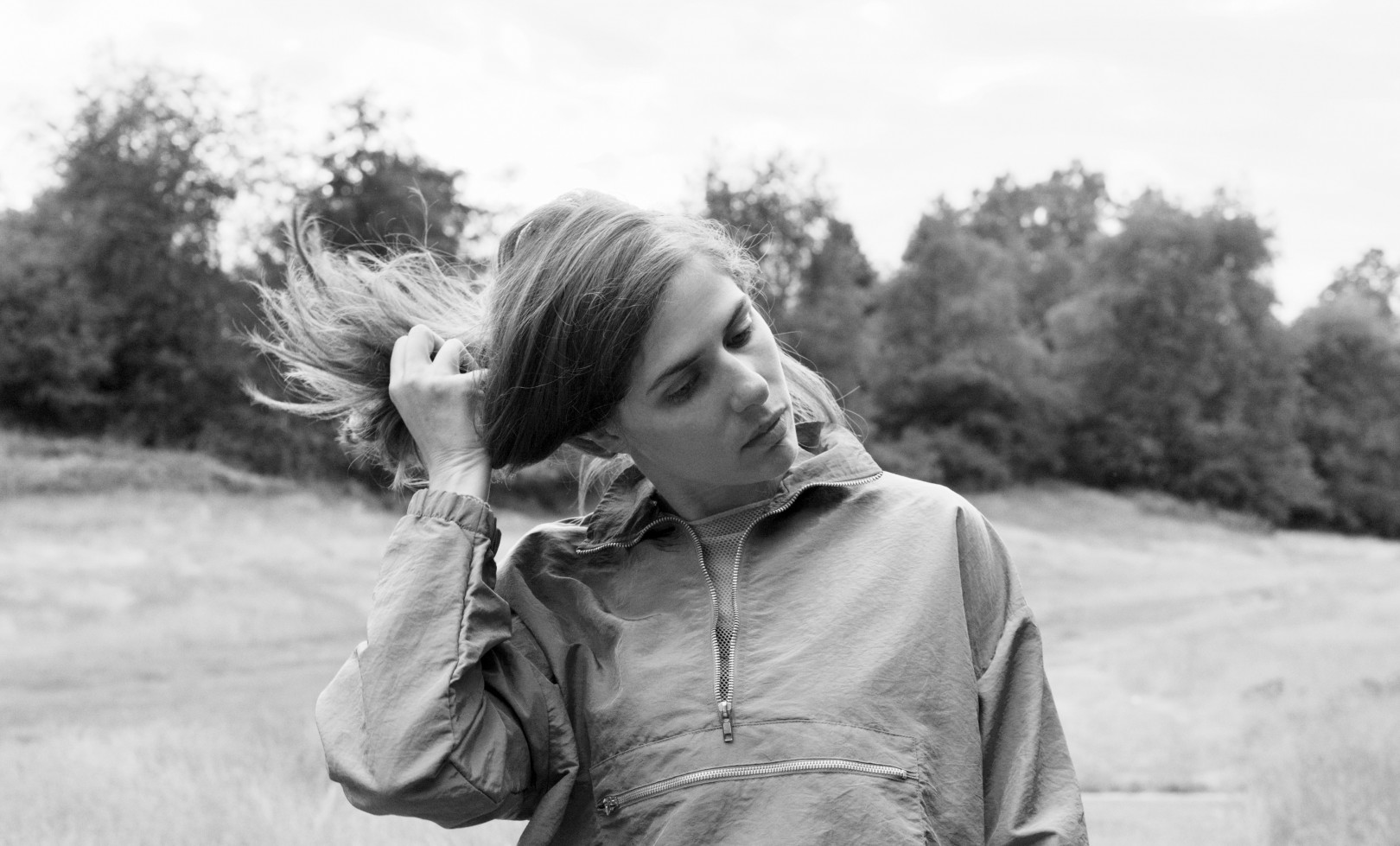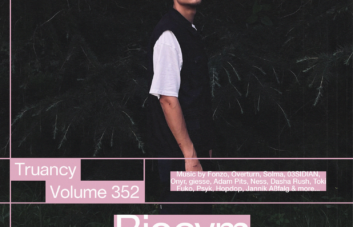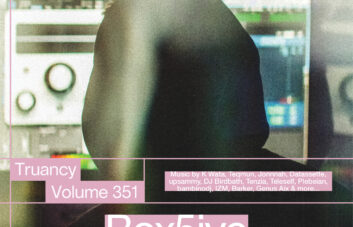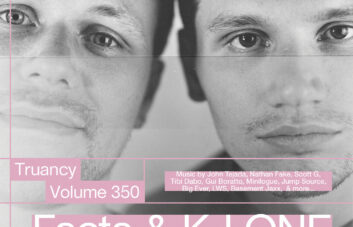To mark the 150th Truancy Volume, we are very happy to share with you a mix from one of the most distinct and interesting artists around. Over the course of several EPs, two albums and many live performances, Laurel Halo has created music which is as strikingly original and engaging as it is unbound to conventions. The jagged Liaisons Dangereuses-sampling New Beat of Out of the Ordinary, sparse-yet-infectious gqom, Hard House Banton’s classic “Sirens”, dubbed-out house stompers, various strains of experimental music and much more – all these diverse sounds are played in a manner which helps provide a glimpse into what makes Halo’s work so compelling. There is an adventurousness in taste, an expert ear for detail and talent in seeking out exciting and surprising sonic combinations and contrasts – all skilfully bound together without ever feeling forced. Ultimately, the result is something which is captivating, irresistibly fun and rich for unpicking. To accompany the mix, we discussed over email her approach to playing live, her last record and the perception and reception of her work.
I’ve seen you perform live twice, about a year apart (once in Dusseldorf and more recently in Cologne). While there were common elements underpinning – rhythmic experimentation, ambient textures and sections of very propulsive music – they also felt different in several ways, and both were significant departures from your earlier live work. Does this reflect a general change in your live sets and production over a specific period of time (such as around the Behind the Green Door EP), or do you go from set to set changing things (either with direct intent or through improvisation)? To what extent does the setting affect the direction of your live set? “I have specific tracks in my live sets that I play anywhere from a few months to a year. But the way they are developed and brought in and out of each other is different each time. There was an amount of crossover between those two sets in particular though, so there’s a chance you just heard them differently because one was outside in the early evening and the other was in a small club at night.”
How close is the link between the music you write (released or unreleased) at a certain time and the live sets that you do? Is the relationship between them one-way, or do you use live settings as a sort of lab to test how certain ideas work before applying them in the studio? “For awhile I wanted the recordings to be a direct result of live improvisation but these days the two are distinct. I have a few different live sets that I do for various settings, and use each as testing grounds for future recorded material.”
If my memory serves me right, your set in Cologne had a very interesting structure in that it was almost non- linear in its progression/build (i.e. at times it departed from typical build-up/peak/resolution structures). Was this due to improvisation or was it an intended (even thematic) aspect of the set? “If I could make a perfectly effective peaktime club PA set I would. But I can’t. I think I just get bored halfway through making something functional and want it to change or do something aggressive or strange for the audience to deal with, even if that’s simply removing a bass pulse and having some syncopated mid/high parts floating around and changing for awhile. At the same time I much prefer hypnotic sets, which brings me back to the first part of this response. So it’s a balance to strike between driving, hypnotic, funky and then breaking that, teasing expectations from the audience. It’s about having fun…”
You have moved away from using vocals in your more recent work. I guess predominantly it’s the result of working with different sounds an aesthetic choice, but I was also wondering whether it was perhaps in small part a reaction against certain types of readings of your music’s emotional “foundation”? “I’m not sure. My earlier work was on average 50/50 vocal-driven vs. instrumental, going release by release, song by song. People tend to heavily focus on female artists’ voices and define their work by it, as opposed to allowing their instrumental work to stand apart simply as that rather than as being of an ‘absence of authentic human presence’. To be fair these questions come up a bit because Quarantine used vocals in such a confrontational way, and because I didn’t do more vocal-driven records afterwards.”
I was reading some of the press you’ve done over the years and often people mention Quarantine as a dark record, which I was a little surprised by. My experience of listening to it was quite different; for me it is melancholic at times, affectively intense, but filled with light on the whole. Not to inquire which subjective interpretation is more correct, but why do you think people read that album as “dark”? Is it projection on our part as the audience, or a response to certain sonic (and/or visual) motifs? “That’s interesting, it’s certainly dark in terms of the lyrics or sonic palette – but maybe there’s something light in the compositional approach, or flow of the songs. In general it’s melancholic but there’s also this warmth, I’ve been told it’s a good comedown album.”
Do you think it is possible to dissolve the thinking process/cognitive knowledge while writing music? What does subjectivity and the (de)construction of it mean for you when it comes to making music? It often seems like the traces of personal head-spaces are intentionally left in order to give space to pure craftsmanship. “I typically let go when I’m recording a performance, but at the same time subjectivity is useful, to have simple hypotheses to start with. It’s fun to see how the music evolves from where you originally set out, drawing on your personal experience as much as your knowledge of music. To me it’s hard to draw a line in the sand between embracing or abandoning personal head-spaces, because it potentially establishes a false primacy of the human voice over the use of non-vocal sounds. There are too many shit-terrible ‘relatable’ or ‘present’ songs written by utter sociopaths. And there are endless robotic club tracks carved out of raw, vulnerable, deep human emotion, without a trace of the author.”
Last year Tompkins Square released a fantastic compilation of covers of works by Karen Dalton, and it featured a track by you, “Blue Notion”. How did your involvement in the project come about? Were you previously acquainted with her music and that of the label? “Tompkins Square got in touch about the project a couple years ago and I said yes immediately because I love her music. It would only make sense to do a vocal cover of a few lines of her poetry.”
From your experience of regularly doing radio (through your regular slot on Berlin Community Radio, as well as shows on Rinse and so on) is there anything specific about doing radio shows that you especially enjoy? “I enjoy playing whatever I’ve recently enjoyed regardless of whether it fits.”
What was your exposure to radio growing up? From past interviews I gather you come from a rather musical family, but perhaps exposure to music through radio is a bit different in how relationships with music and the radio medium are built. Was there electronic music on the radio that you listened to? “My exposure to good radio was basically WCBN, and then typical pop and classic rock stations. Electronic music I got from the late-night dance shows on WJLB, and Carlos Souffront’s WCBN shows.”
Just touching on one of your earlier answers, you’ve said you have a preference for a certain hypnotic quality in your live sets. I think that’s also one of the key characteristics of your last release, In Situ – particularly through intricate, varied percussive elements of the music. Could you talk about that record a bit, perhaps in terms of the processes and inspirations that led to its sound? “I started working on In Situ a couple years ago – they were tracks from my live set that I wanted to record. My goal at the time was to have music from bare parts rather than having a glut of sounds from which to carve negative space – just working more with emptiness. Which is funny cause the tracks can still be full-on, but anyways! After awhile I got stuck on them and let them sit for almost a year and then revisited. This was actually a first for me, because up until that point I was so intent on finishing tracks and putting them out. So it was an important if difficult process of learning patience and letting the tracks breathe, not forcing the tracks or putting a hard deadline on anything, which can be difficult when everyone wants more new music all the time. Music influences for the record are pretty documented on my BCR shows from the time. And simple stuff had (have) an impact too, like Berlin’s weather, physical exercise, eating well, developing friendships…”
And lastly, what was the idea behind your Truancy Volume? “I just wanted to make a summer mix, basically! I have been listening to it in the car a lot this past week.”
Tracklist:
Skate Laws – And He Did Grind In The Prison House
Limit – #06
Im Wald – Get Out
Hiele – Verwelkoming (Edit)
COBO – Prototype01
Strategy – Return From The Stars
Appleblim & October – Other Side of the Sky
B.O.P. – Naja
Central – Tube Life
Lemme Kno – Lines Up And Down, Like The Old Sounds
Out of the Ordinary – Play it Again (Los Ninos Mix)
Bintus – SEG
Cruel Boyz – Umeqo Emagqomini (Dub Mix)
Elastic – Fisky
OKZharp & Samrai – Gated (Woza Uzova Instrumental)
Cousin – 4GOT
M.E.S.H. – Follow & Mute
Hard House Banton – Sirens
DJ Mabheko – Syagwaba
Schatrax – Turntribal
D.Dan – Dred Dan (Dub Mix)
Struktion – Strukture
Kassem Mosse – Chilazon 2
Adonis Presents Noleian Reusse – Lovers Jak
Claude Young – Second Experience
Mark Broom – Sixty Six (TWR72 Remix)
Sparky – Things Fall Apart
I-F – Who Are You
Rick The Godson Wilhite – My Voyage
DVA X Simbad – Soundcheck
Facta – I am a Strange Loop
Chino Amobi – Rotterdam
Photo by Phillip Aumann. Interview by Alexandra Gruebler and Eradj Yakubov.





specula ——- Quarantine